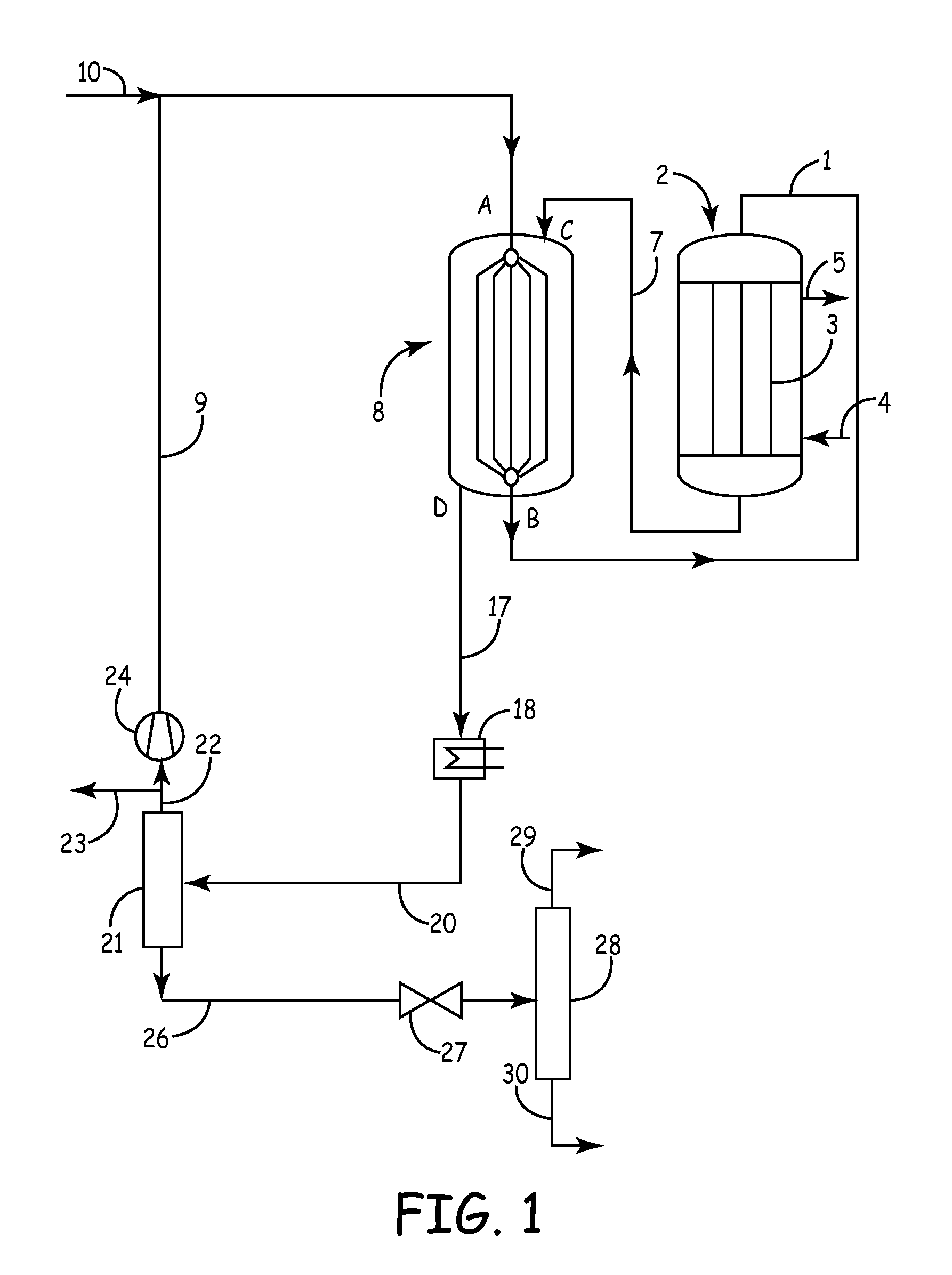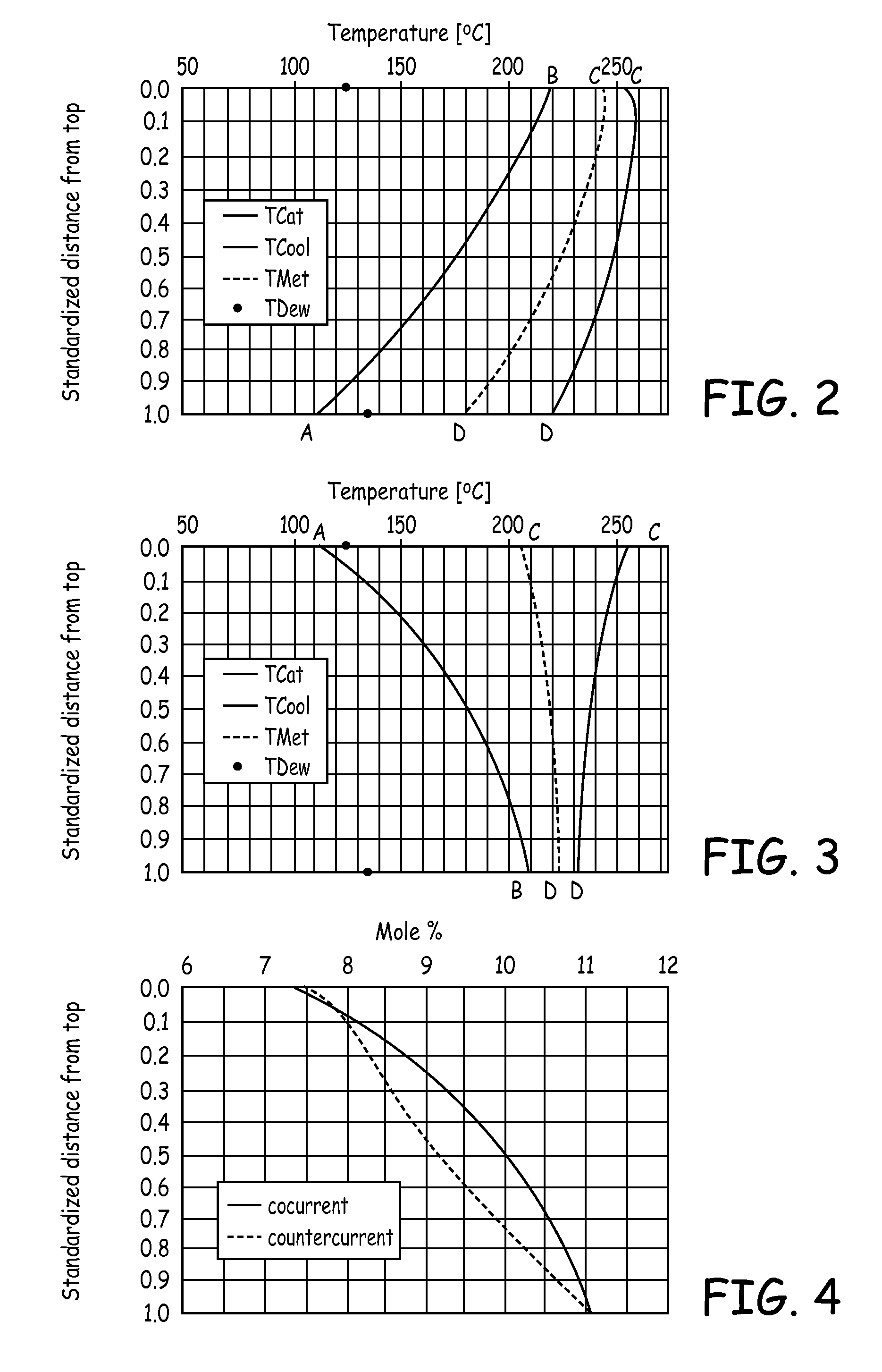Process and plant for producing methanol
a technology of methanol and synthesis gas, which is applied in the direction of organic compound preparation, liquid gas reaction process, and compound preparation, etc., can solve the problems of difficult design of the reactor, limited co content of usable synthesis gas, and condensation of methanol product, so as to avoid condensation of methanol. , the effect of avoiding condensation
- Summary
- Abstract
- Description
- Claims
- Application Information
AI Technical Summary
Benefits of technology
Problems solved by technology
Method used
Image
Examples
Embodiment Construction
[0018]In the plant shown in FIG. 1, a mixture of fresh and recirculated synthesis gas is passed through a conduit 1 into a first synthesis reactor 2. This first reactor 2 for example is a tubular reactor known per se, in which for example a copper catalyst is arranged in tubes 3. As coolant, water boiling under elevated pressure is used, which is supplied in conduit 4. A mixture of boiling water and steam is withdrawn in conduit 5 and supplied to a non-illustrated steam drum known per se for energy recovery.
[0019]The synthesis gas entering the first reactor 2 is preheated to a temperature>220° C., since the catalyst will only respond from this temperature. Usually, the gas temperature at the inlet of the first reactor 2 is about 220 to 280° C. and the pressure lies in the range from 2 to 12 MPa (20 to 120 bar), preferably in the range from 4 to 10 MPa (40 to 100 bar). The coolant which is withdrawn via conduit 5 usually has a temperature in the range from 240 to 280° C. Depending on...
PUM
| Property | Measurement | Unit |
|---|---|---|
| temperature | aaaaa | aaaaa |
| temperature | aaaaa | aaaaa |
| temperature | aaaaa | aaaaa |
Abstract
Description
Claims
Application Information
 Login to View More
Login to View More - R&D
- Intellectual Property
- Life Sciences
- Materials
- Tech Scout
- Unparalleled Data Quality
- Higher Quality Content
- 60% Fewer Hallucinations
Browse by: Latest US Patents, China's latest patents, Technical Efficacy Thesaurus, Application Domain, Technology Topic, Popular Technical Reports.
© 2025 PatSnap. All rights reserved.Legal|Privacy policy|Modern Slavery Act Transparency Statement|Sitemap|About US| Contact US: help@patsnap.com



